“Ask not what you can do for your country. Ask what’s for lunch” ~Orson Wells
“One cannot think well, love well, sleep well, if one has not dined well.” ~ Virginia Woolf
“We have to bring children into a new relationship to food that connects them to culture and agriculture.” ~Alice Waters
I have been on the road a lot in the last couple of weeks, first riding from Bozeman, MT to Valley City, ND and then from Valley City to Minnetonka, MN. On these long road trips, we partook in meals that my partner’s dad comically refers to as “gut bombs.” He is referring to the salt- and sugar-laden grease feasts that are so readily available from fast food joints along the interstate. That is exactly what they feel like after eating them: gut bombs.
At one of the stops, my attention was grabbed by the “Kids LiveWell Menu.” The meals weren’t exactly what I’d consider healthy, but they were definitely better than fries and chicken nuggets. It’s a program run by the National Restaurant Association to help parents find “healthy” options for their children at restaurants. I checked out the website, and one of the more notable goals of the program is to please children’s palates, and it alluded to the fact that this can be difficult to do.
So, why is it so hard?
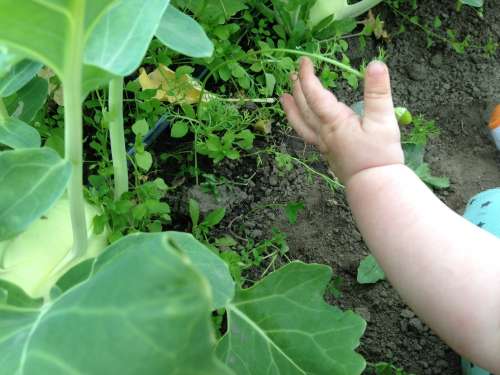
Let’s bring kids into the agricultural process early!
Remember the backlash Michelle Obama experienced with her support of the Healthy Hunger-Free Kids Act of 2010? She was slammed for several things–mainly that it was ridiculous to expect kids to eat meals that weren’t laden in bad fats, sugar and salt. Since the roll out of healthier lunches, there have been stories of success and failure. The most common news is that kids are hungry because they throw away a lot of food…because they don’t like it.
You know what? I don’t blame them. Kids who have never eaten many unprocessed foods aren’t going to like them all of a sudden. This is especially true of the mass produced conventional fruits and veggies that kids get in school lunches. Sure, broccoli is healthier than french fries; but broccoli that has been traveling for a long time, has been cooked and reheated and has been grown in depleted soil tastes pretty much like nothing (or maybe a bit of that overcooked brocolli taste) . For a kid, the mixture of funky texture and gross bitter taste is gag worthy. On the other hand, fresh, locally grown broccoli tastes better and is probably better for you, pure and simple. But a lot of kids still wouldn’t eat it.

A 50×100 ft. garden is a great introduction to basic veggie production! It is also feasible to find this space on most school properties. This is Evan’s parent’s plot in North Dakota.
As a teacher of school age children, I know that kids like to be a part of the process (I’m looking at you, Alice Waters!). If a child grows a food, s/he is much more likely to like the end result. Of course there will still be those that do not like what they have grown, but it will definitely be far fewer than just giving them the foods blindly. I have taught students how to grow and harvest veggies; and we have prepared together and eaten the foods we’ve grown. We have taste tested the same types of veggies grown and processed in various ways. These kids have adventurous palates and know that foods taste different when produced in different ways.

Repeat from last week…but so cute!
Through teaching kids about how their food is produced and allowing them to experience the production of the foods they eat, we should be able to prevent some of the problems that come with a terrible diet–like obesity and diabetes (not to mention possibilities of chronic inflammation, leaky gut syndrome, food allergies, and behavioral effects). Instead of trying to solve this problem by just changing school lunches, let’s try to prevent these problems by including kids in their food production!

Families who eat together…enjoy the finer things in life together.
Eating well goes beyond physical health. It can improve educational outcomes and critical thinking skills. If we know about how food is produced, we develop fundamental understandings of science, sociology, business, marketing, engineering and mathematics. Participation in food production is highly physical and engages all of the senses. There is plenty of literature about farming and nutrition to reinforce reading and writing skills. All of this continues with the intricate links between the environment and food production. Growing and eating food is an interdisciplinary experience.
Better yet–let’s expose our newest members of the world to good, nutritious foods! Ava just started her first solid foods a couple of days ago. We started with a soft boiled egg yolk mixed with some breast milk. She has also been gnawing on some raw veggies and fruits since she’s been able to sit up and has been getting some teeth! I’ve gotten some mixed responses to going this route versus the vitamin fortified cereal route. Egg yolks are a perfect first food–full of choline, iron and good cholesterols. Plus, they are an excellent first texture for baby. Today I might even try to grate some frozen liver into the concoction a la Weston A. Price. Cereals (especially those bought in a box from the store) are pretty much void of anything nutritionally significant. The good parts of the grains have been removed in the processing so the vitamins and minerals present are supplemented. In my mind it’s like a baby multi-vitamin mashed up in some ground up cardboard. Why would I do that when I can feed her real food?
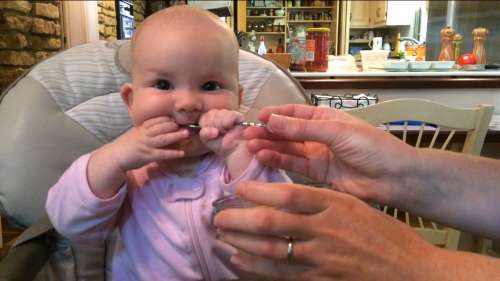
Fortified cereals are still the first food for millions of babies–Heck, my first food was rice cereal!–and we all generally turned out okay. We are smart, well rounded individuals (in general). Most of us are not socially inept or morbidly obese or suffering from nutrient related illness. We all generally learned to tolerate, or even enjoy, our broccoli. However, we still have cravings for gut bombs. If given the option, with all feelings of guilt and shame aside, I would generally pick the junk food over the healthy food. I know part of this is evolutionary–we are programmed to take advantage of easy to obtain high caloric foods…but I know children who go for the bell pepper slices long before the potato chips, and I kind of wish I was one of them! These kids were raised on small scale vegetable production farms or in households where a large portion of their foods were grown by them with a lot of help from parents.
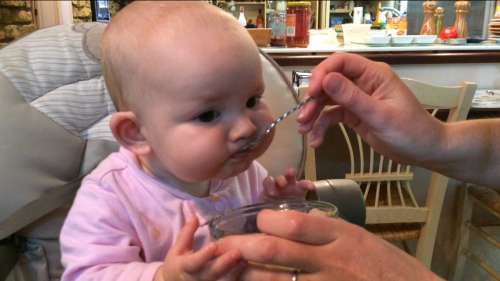
I understand that many, many (way too many) people do not have access to fresh produce and pastured proteins…this is a major problem, and it is something that can and will change. There are initiatives everywhere to start urban farms, to institute school gardens and to eradicate food deserts (but not desserts…that would be plain mean!. In my mind, the biggest hurdle is to get the nutrients back into healthy foods by teaching people how to care for the land they are growing these foods on so that the produce is delicious and nutritious.
I’m looking forward to the day that I am on a road trip with my kiddos, and instead of asking for a gut bomb they rejoice at a picnic stop to munch on foods that we grew and processed ourselves.
Delusional? Maybe…But I have hope!
What do you think? Are kid’s food trends changing for the better?
Sending you peace and love from MINNESOTA!
Alex, the Rural Farmgirl





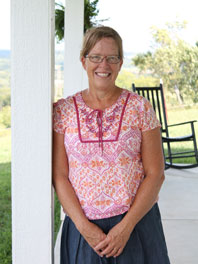
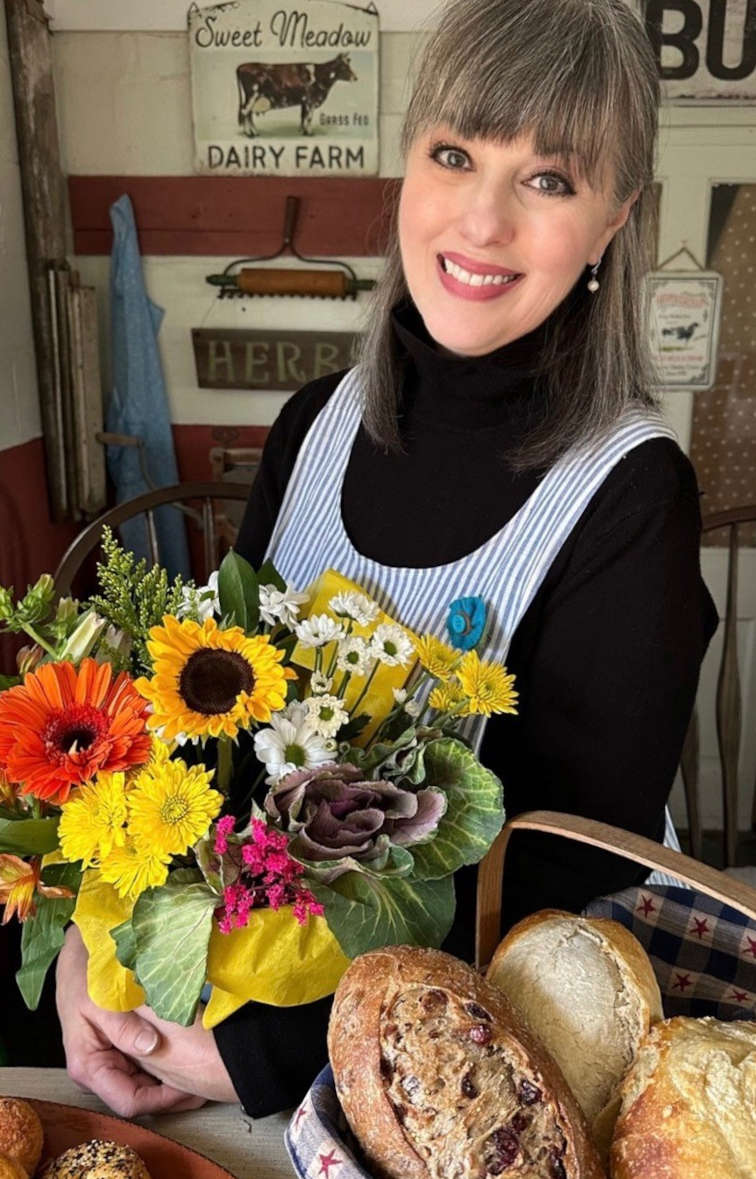




Ouch! Encouraging!!!!! Enlightening!!!!! Hopeful!!!! this would be the only way to live and if only we all would, not could, get on it. I commend you on helping Ava to get used to real food and for sharing your knowledge with us all. Hope you are having a fine time in Minnesota and I know Ava is being enjoyed. God bless.
Thanks, Joan! This is something I’m very passionate about, and it can be hard to keep my judgment in check…but I try :). Our trip has been a blast!
You hit the nail on the head with this important food issue. Real food vs. Gut Bombs. AND teaching our young to grow their own food. In the name of progress and convenience we lost some of the quality of our earthly delights. I look forward to you blogging into the future and changing the way our next generations think about food. In my perfect world, the children of this country (and world) would be young farmers, multilingual citizens, musicians and artists 🙂
Thanks, Laura! We are spoiled for convenience, aren’t we? Who can blame us for choosing the easy to prepare fare over the labor intensive job of growing and processing our own food? I think the change comes once we realize how much better it tastes and makes us feel! It’s fun sharing these discoveries with everyone, especially little kiddos.
Over 25 years ago our middle daughter was critically ill. We moved towards an organic, mainly vegetable diet. That along with herbals made a major difference in her health. With 5 children I made my own baby foods, searched for organic foods, foods with no dyes or additives and discovered I had to simply make my own. Remember this was 25 or more years ago so access was not there. So I bought fresh veggies and fruit. I cooked the green beans, carrots, potatoes, ect and made my baby food. Our older children enjoyed homemade yogurt with berries for breakfast and green drinks ( yep we were doing them before they were in lol). My children now range in age 35 to 24 and they have always eaten their veggies.
I really think there are a few keys to this. It is great to introduce this early but we made a change in eating habits with a 9 and 10 year old! We did grow some produce and the kids loved this. I had planters with their own cherry tomatoes and spinach. But the big thing was letting them help in the kitchen and with the shopping. I remember introducing green drinks. You should have seen their faces lol. But what I did was let them begin by putting the fruits in and the base of almond milk. They tasted it. Then we added in the spinach or kale, blended and tasted again. IT WAS GOOD. They loved them. The kids helped make yogurt. They loved veggie pizzas when made with their own hands. They shopped with me and helped pick out lunch items. They grew up “just knowing” additives, dyes, and processed foods were not good and real food taste better!
Today I love seeing my grandkids enjoying our 10 acres, picking fresh strawberries, gathering black berries, wanting fried green tomatoes, and thinking nana’s green drinks are the best thing ever. Blessings to you!
Way to go! Nutrition is such a vital part of our health and recovery from illness. I’m so happy these changes were successful in your family. I whole-heartedly agree on the aspect of getting kids involved in the preparation and cooking of foods. It’s another thing that involves all of our senses and kids love it. Thanks for sharing your stories with us!
This won’t be something “local”, but the first solid food I gave my baby was avocado. From what I knew at the time, 40 years ago, it was considered a “neutral food”, perfect for babies. My little one was breastfed for the first year, then I introduced avocado and banana. She’s a very healthy tri-athlete with four big boys!!! Guess it worked!
Yeah! Avocado is a great first, food, too! I think I’ll be introducing Avos in a few days. They are such an amazing fruit. Glad to hear your success story!
Hi Alex,
I love reading your Rural Farm Girl blog. I feel nearly giddy when it shows up on my computer & I read it in print also…..
It is great getting to watch Ava grow & I love hearing about her.
She is going to be an amazing flexible country girl who loves all types of food.
She is really blessed having you as her Mom.
Keep up the good work!
Rose
Wow! Thanks for the lovely complements. Being a mom is the best thing I’ve ever done. I can’t wait for the experiences and memories to come. Best to you and yours!